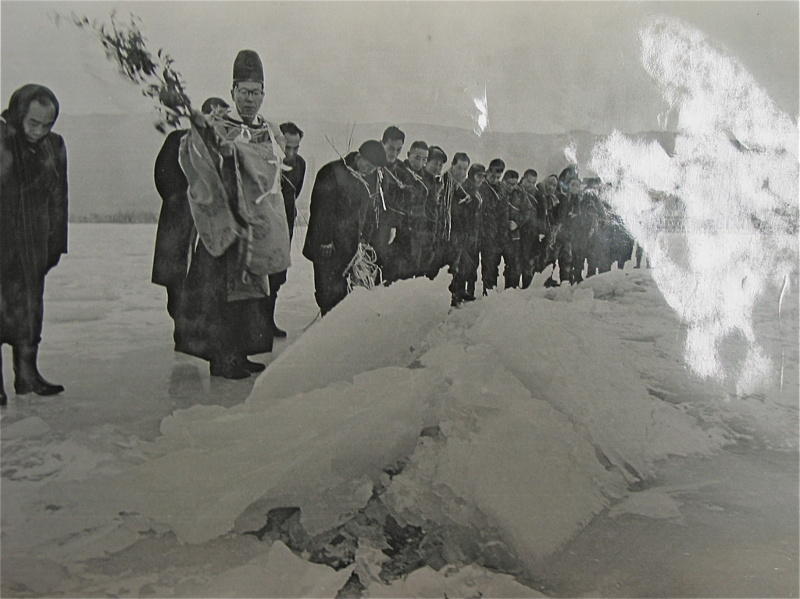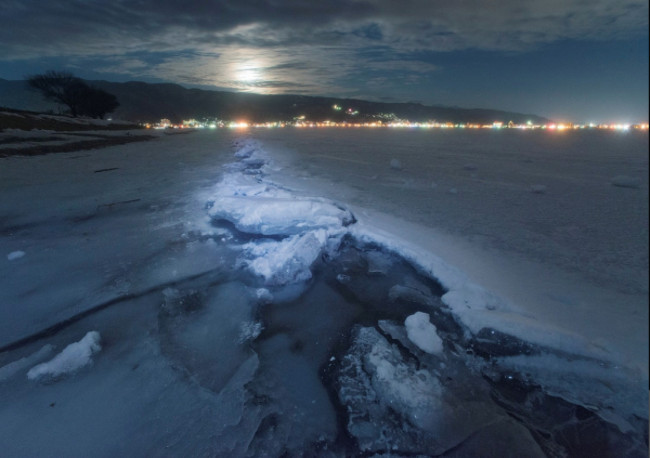Japanese monks have recorded the state of the Earth for 600 years
Although a proven phenomenon, the monk's elaborate record will contribute to eradicating doubts about global warming.
In the winter, Shinto Shinto monks living in the central Japanese mountains region patiently waited for the ice hills to rise to the ice. They named these ice hills omiwatari and believed it was the footprint of a male Shinto god left after walking through Lake Suwa to meet the female god across the shore. The annual dating of the two gods often serves as a basis for monks to predict the weather.

The long tradition of the Taoist tradition casually contributes to today's science.
According to the information they have stored, monks have traditionally recorded the time of formation of glaciers since 1443. Thus, the record with nearly 600 years of life is officially reported as climate. The oldest known.
Thanks to this spiritual tradition, scientists have very specific evidence of the impact of human activity on nature.
In 1954, a group of researchers from Germany and Japan published a report analyzing the records of the Shinto priests. In it, they divided the information of those 500 years into two parts, representing the time before the industrial revolution and after the revolution. The results show that in the later period, that means that from the 17th century to the 20th century, the number of years of freezing Lake Suwa doubled compared to the period before the 17th century. Specifically, in the first 250 years, the lake did not create the ice on the surface 13 times, while in the later period this number was up to 27 times.

On the last 26th of April, US and Japanese researchers collaborated to publish a data analysis report of Japanese monks and a record of the frozen years of the Torne River , the river flows through Sweden and Finland.
"The importance of these two records lies in the fact that they stretched from the beginning of the industrial revolution to a long time after that," explained research project leader John Magnuson .
The data collected about the Torne River began in the 17th century, when a merchant named Olof Ahlom decided to record the time when the river froze in 1693 for the role of transporting the river. The natives then followed that merchant's activity into a tradition. Today people there continue to stay and even bet with each other every year when the river freezes.
By comparing these two archives, scientists found that both of these water sources froze later and melted sooner after the industrial revolution. Although these have been pre-determined based on complex computational technologies, such direct observation information will play an important role in universalizing the process of global warming.

Magnuson project leader shared: " I think that more people can understand the problem more clearly with this kind of authentic evidence rather than reading complex, confusing analysis ."
The actual comparison results show us the level of climate change in recent times, when in 55 years from 1950 to 2004, Lake Suwa did not pile up to 12 times. Compared with three non-bandages during a period of 255 years from 1443 to 1700.
The same phenomenon happened with the Torne River with 9 years of warmth in about 14 years from 2000 to 2013. While in a period of 207 years from 1693 to 1899, the river only encountered 10 "cold" year like that.
Although the winter is getting warmer, the Shinto priests in Japan still carry out the tradition of observing and taking notes. In February 2012, they celebrated the first freeze since 2008.
- How does Japanese monk self-mummify?
- Discover mummy monks meditating according to lotus position in Mongolia
- Detecting the skeleton of a monk is cut off meat before being buried
- The embalmed monk in Mongolia may not have died yet
- Japanese encephalitis on the top of the epidemic
- Close up of mummy monks meditating in flower position
- The Khmer monks revealed the secret of embalming the body
- Bear cat mother battle screen with bobcat
- Who is allowed to build ancient Maya temples?
- Discovering evidence of Earth's oldest life
- Why can monks meditate in a pan of boiling oil?
- The first photograph captures Earth from a rocket 70 years ago
 'Fine laughs' - Scary and painful torture in ancient times
'Fine laughs' - Scary and painful torture in ancient times The sequence of numbers 142857 of the Egyptian pyramids is known as the strangest number in the world - Why?
The sequence of numbers 142857 of the Egyptian pyramids is known as the strangest number in the world - Why? Miracle behind the world's largest stone Buddha statue
Miracle behind the world's largest stone Buddha statue What is alum?
What is alum?